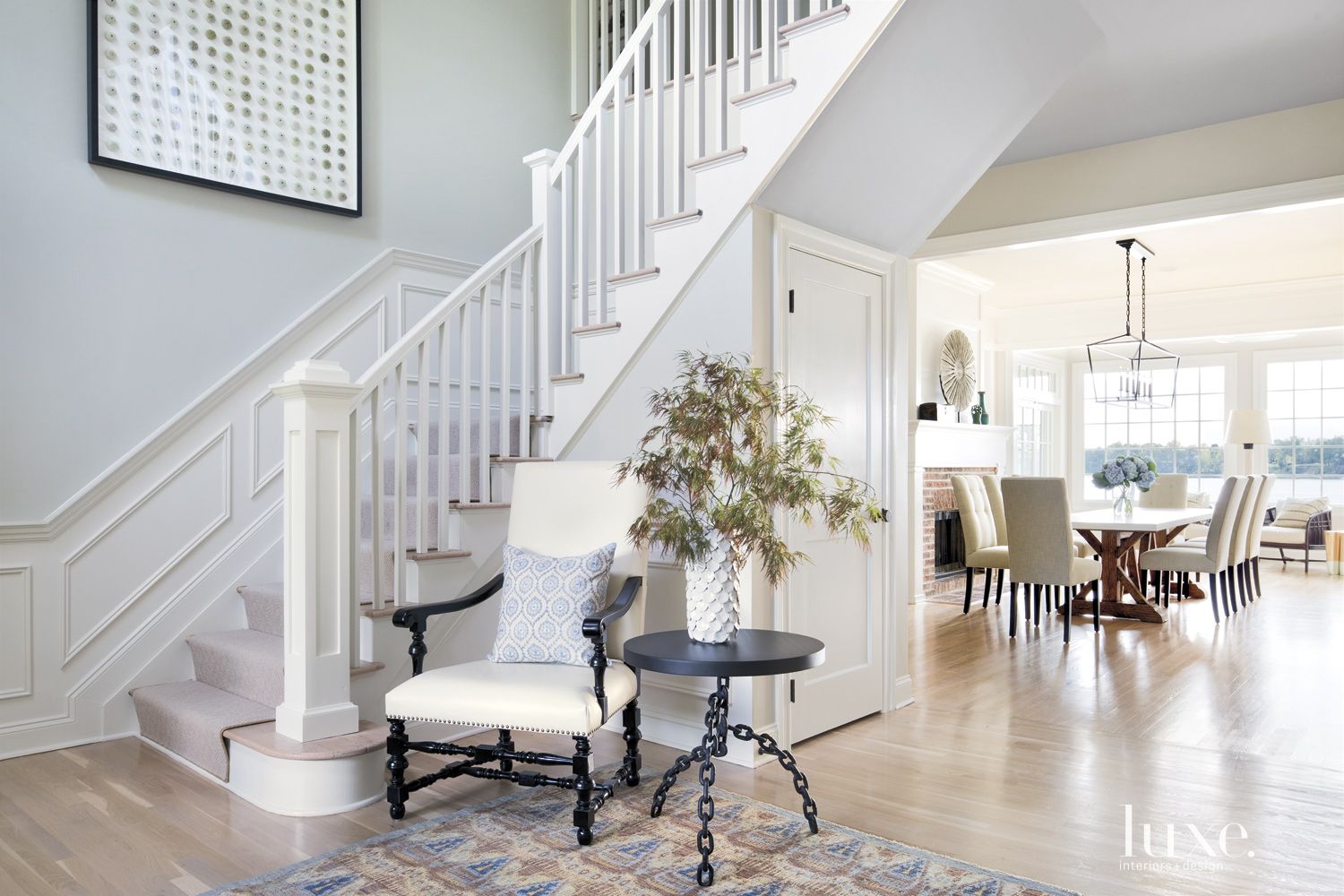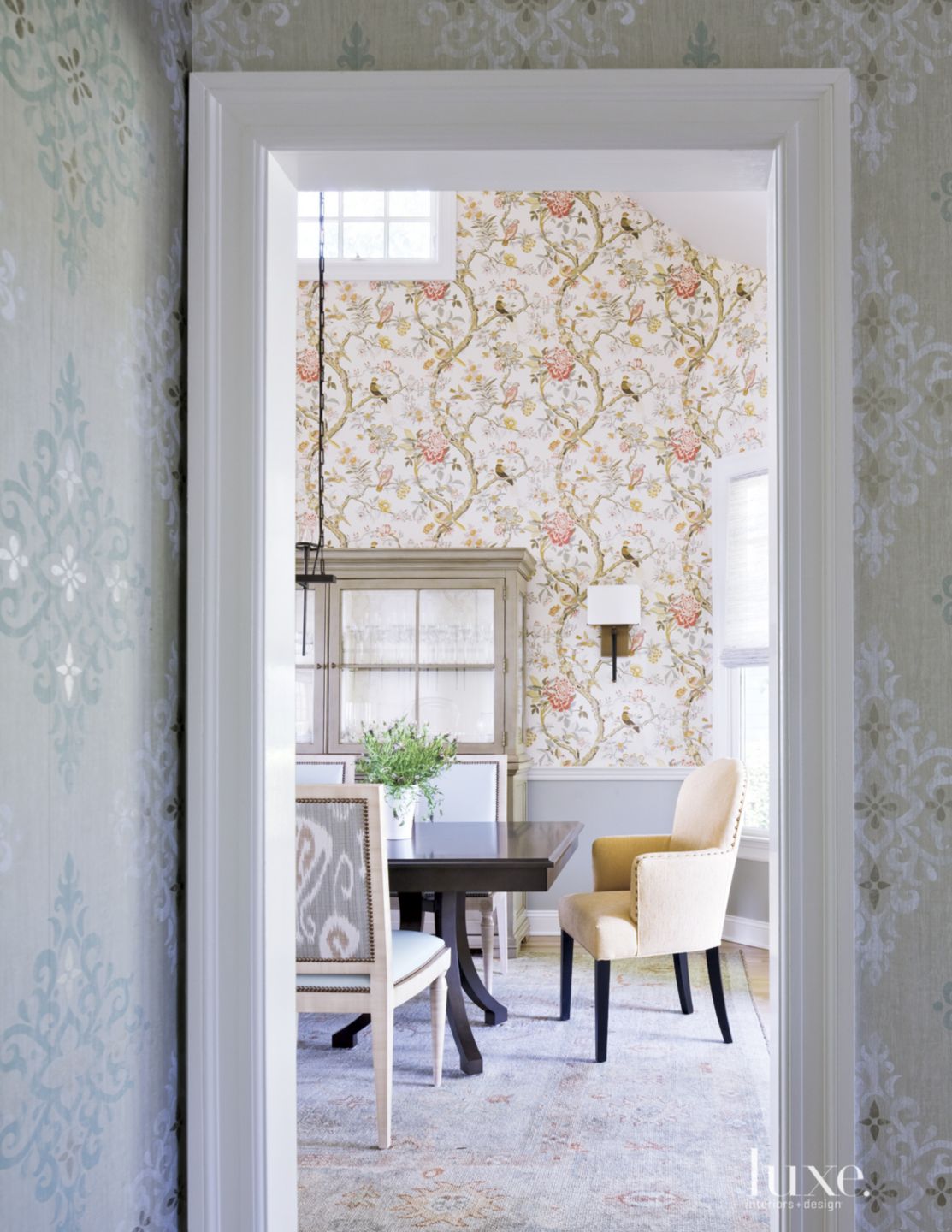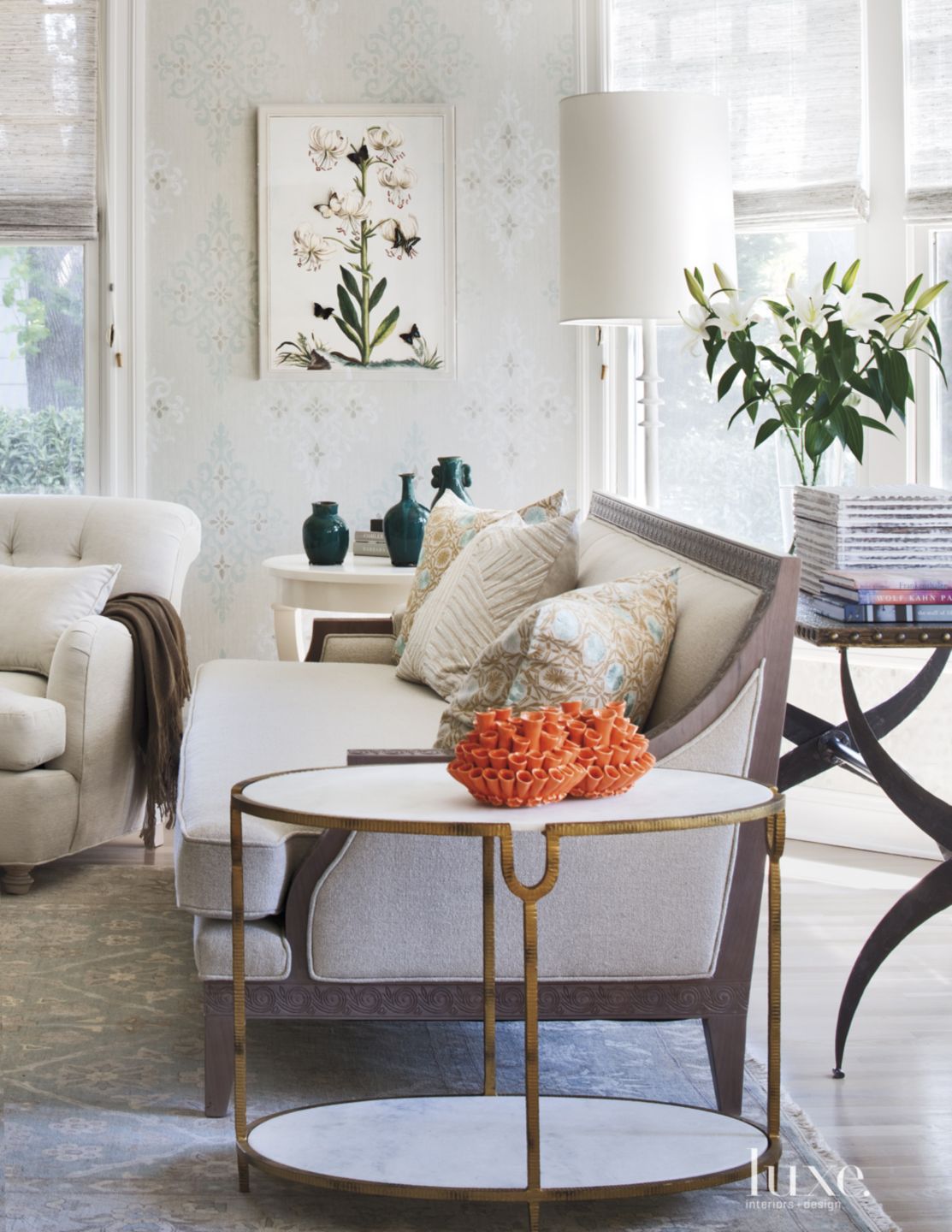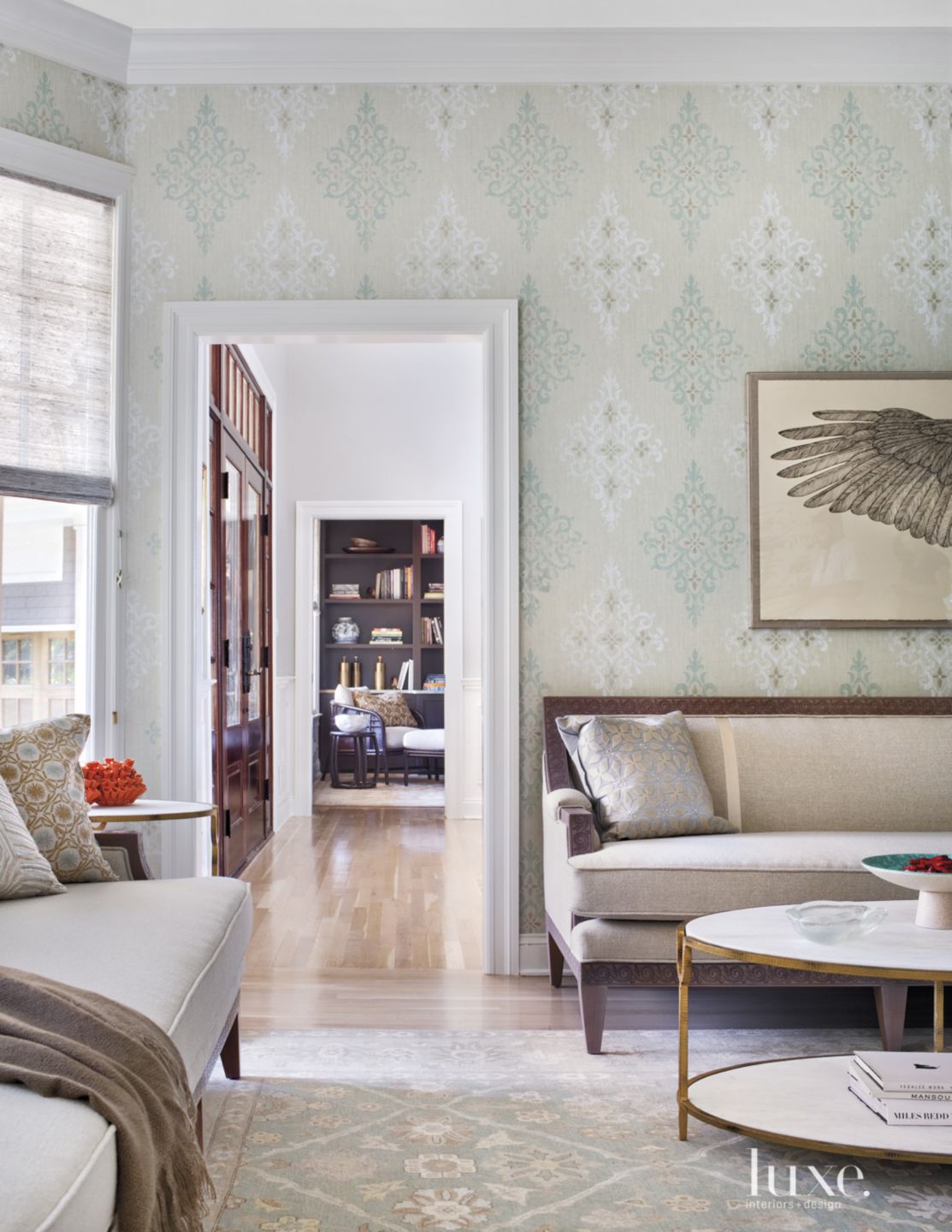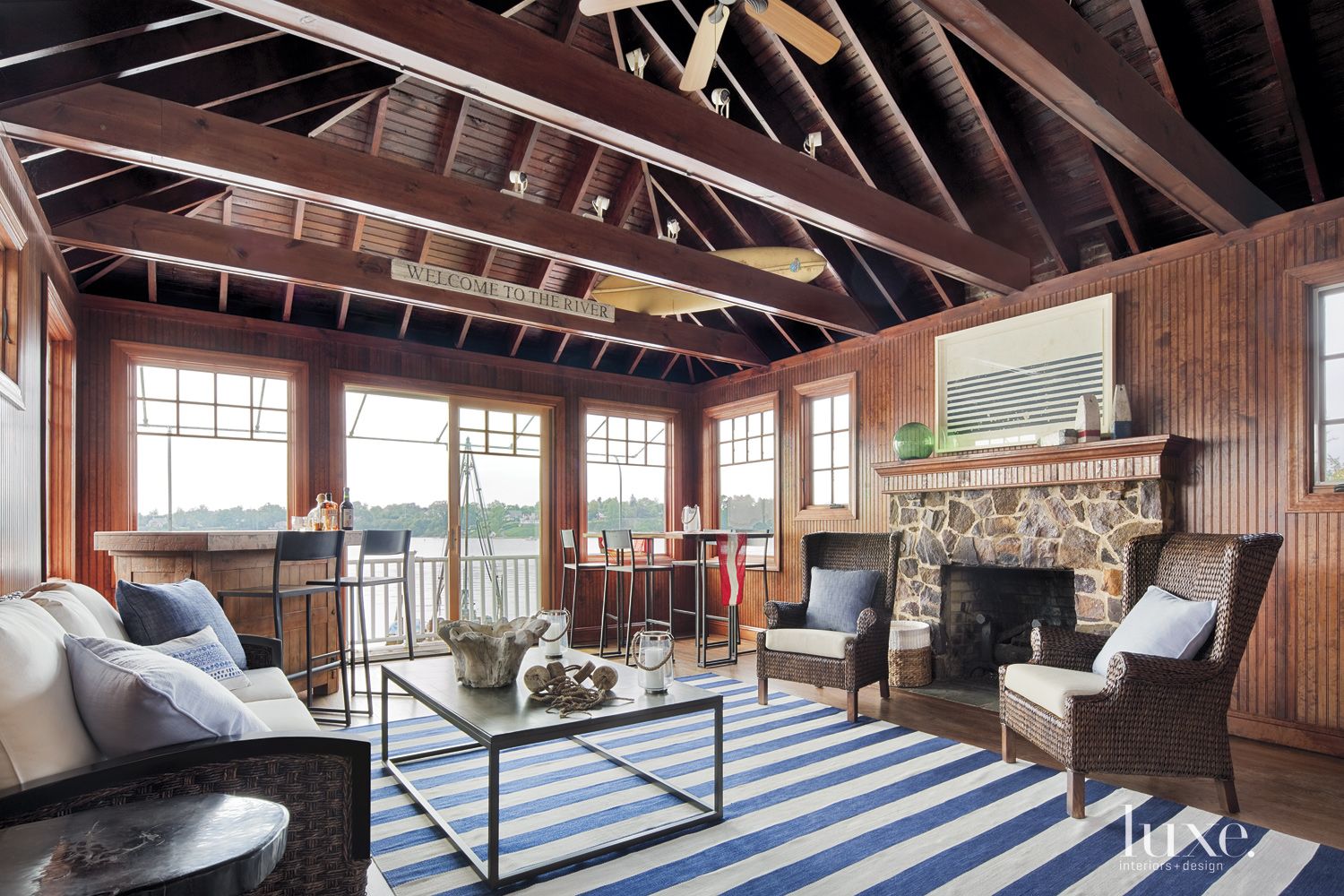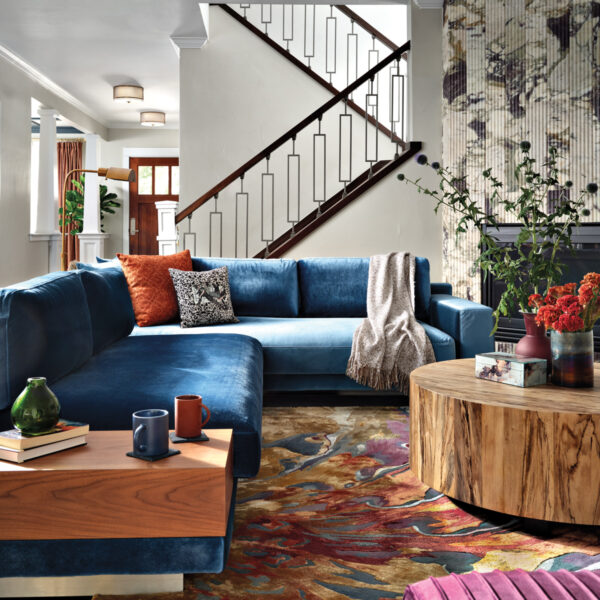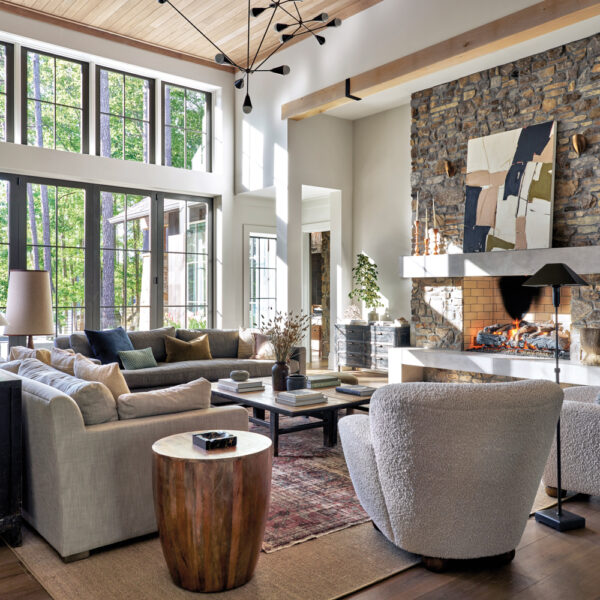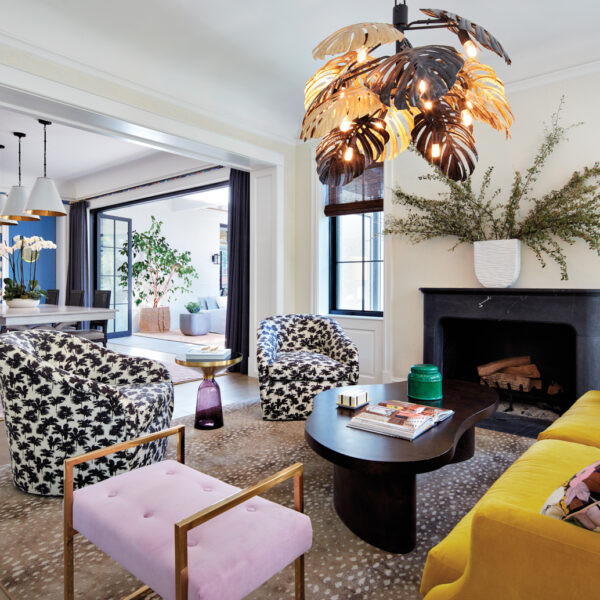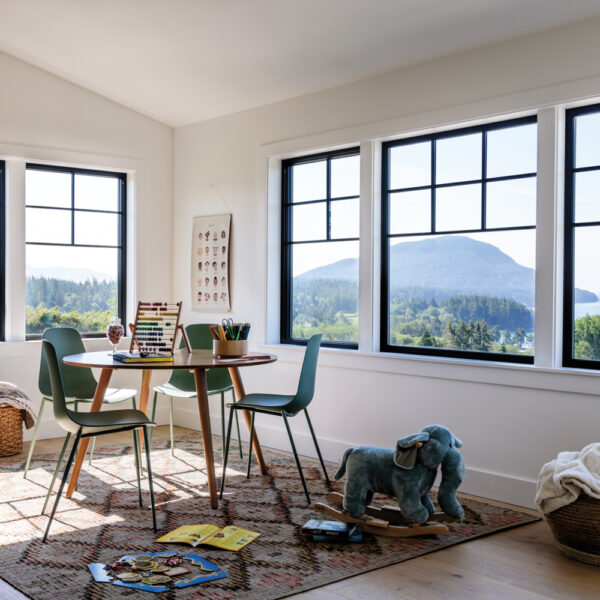When a young family decided to move out of New York City and into a home on New Jersey’s Navesink River, they wanted to renovate the house in a way that would respect its original Arts and Crafts-style architecture while also transforming the dark interiors into a light and airy contemporary space. Enter designer Kati Curtis, who was called upon to do just that—and she pulled it off without moving a single wall.
Because the owners—he’s in finance and she’s a stay-at-home mom to their two young children—were satisfied with the home’s overall layout, they wanted the original architecture to remain intact. However, when it came to the dated kitchen and five bathrooms, they knew they had a gut renovation on their hands: The kitchen received new clean-lined white cabinetry to replace the dark wood, as well as two new Caesarstone-topped islands; a clawfoot soaking tub was added to the master bath in front of the window to take in river views.
From the outset, the designer had to work with spatial and proportion issues. As was common in construction a couple of decades ago, the house boasted plenty of architectural bells and whistles, such as dormers and oddly formed spaces, including two octagonal-shaped rooms—one downstairs and one upstairs. “Typically, Craftsman-style homes have 9-foot-high ceilings,” she adds. “This house had very high ceilings, so we needed to bring things down to a more human scale without making any architectural changes whatsoever.” The house was steeped in deep earth tones, so light and bright became the watchwords. “The woodwork was beautiful, but it was stained very dark,” Curtis recalls. Everything from the wall panels and stair balusters to moldings and beadboard ceilings was treated to a sweeping whitewash. “The dark wood actually emphasized the home’s lofty proportions,” Curtis says. “Painting all the woodwork white helped combat this effect and offset the scale.”
The newly whitewashed woodwork and the consistent use of pale grays, taupes and other neutral colors throughout the house went a long way toward establishing a sense of unity and organization. Because her clients were “shy about bright color,” says Curtis, upholstered pieces were covered in pale neutral fabrics. The designer also introduced muted tones of red, green and blue into accent pieces—mere hints of color that nonetheless pop against the understated backdrop.
In the formal dining room, Curtis made clever use of Thibaut wallpaper with an overall bird pattern—reminiscent of the lush wallcoverings of the Arts and Crafts era—to also help achieve architectural aims. “The room is long and narrow with a vaulted ceiling,” Curtis says. “The luxurious patterning of the wallpaper counteracts a ‘tunnel effect’ and distracts from the harsh geometric lines of the ceiling.”
The presence of two young children required that nearly everything be easy to clean. Seating in the family living areas, for instance, is covered in outdoor fabric, and in the dining room, the children can color on the stone-topped table without ruining it. The coffee table in the family room, a free-form wood slab with natural variation, was chosen for its durability and spill-resistant material, as well as for its beauty. Patterned Donegal wool rugs—like those popular in the early 20th century—can also be found throughout the home and are “beautiful yet practical, as far as hiding stains and dirt,” says Curtis, who also brought in beanbag chairs and a vibrant patchwork carpet from Flor for the attic playroom. “It’s a fun space where we could go crazy.”
Now, the home is classic, elegant and serene, while also being supremely suited for family living. Above all, it is flooded with light—an uplifting testament to the magnificent power of pale.




